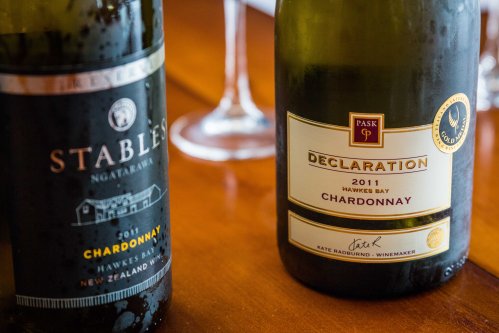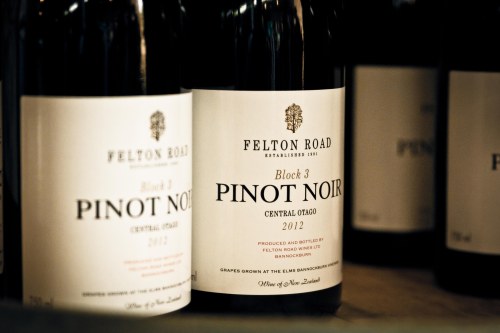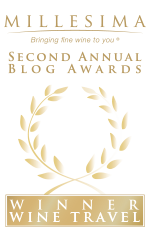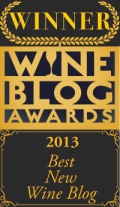Bordeaux of the Southern Hemisphere:
An Overview of Hawke’s Bay, NZ
The best way to understand a wine is to meet its maker and step foot on its home turf; only then can one grasp the essence of its identity derived from the place in which it was borne. To this end, I spent a few days in Hawke’s Bay, situated midway along the East coast of the North Island of New Zealand. Aside from Waiheke Island, 30 minutes from Auckland by boat, Hawke’s Bay is the only other New Zealand wine region focused on making high-quality red wines from grapes other than Pinot Noir.
Acclaimed wine writer Oz Clarke penned a book entitled Bordeaux. In it, he lists the few rare wine regions of the world that have similar enough growing conditions to Bordeaux to be considered “lookalikes”. Hawke’s Bay (along with Waiheke Island) makes the selective cut; Clarke references Villa Maria’s Reserve Merlot-Cabernet off the Gimblett Gravels, as a favorite exemplary wine of the region.
Upon arrival, I met James Medina from the Hawke’s Bay Wine Growers Association at Trinity Hill Winery for a presentation on the soils, climate, styles, wines, and producers of the area. One of the warmest and oldest regions in NZ, Bordeaux-blends and Syrah garner the greatest attention, deservedly so, although their Chardonnay warrants watching as the style continues to evolve from oaked and weighty to the current trend of lean, mineral-driven, and fresh. Sauvignon Blanc and Semillon show promise. The number one problem the region faces: small production and importers who lack the vision or confidence, or both, to gamble on bringing these wines to the States.
The vineyards of Hawke’s Bay sit, in what might appear as counterintuitive planting, largely on the riverbeds, rather than the hillsides. Medine explained that because New Zealand is a relatively young country, the rivers (now dry, of course), swept the productive soils out of the valley, while the rumpled hills surrounding it retained fertile topsoil. Thus, the valley floor suits grape growing better; that, coupled with the fact that very few hillsides offer the ideal north facing aspect (remember: we are in the Southern hemisphere).
Hawke’s Bay soils carry significant diversity of composition—there are 27 different types; mixed with climate variation, a sundry of growing conditions exist throughout. However, two soil types in particular are proffered as the most clearly defined and worthy of distinction: The first and most prized by producers lucky enough to have vineyards on them are the Gimblett Gravels.
The Gimblett Gravels are not a defined GI (the NZ wine industry is still young; all regions are grappling with delineating their sub-regions), but those who own vineyards within these 800 hectares, banded together in 2001 to promote the special qualities of the terroir.
The gravels, long ago laid down by the Ngaruroro River, became exposed after a huge flood in the 1860s. An immediate parallel can be made to the draining of the Haut-Medoc by the Dutch which led to the exposure of large tracts of gravel fields, also relatively flat, now currently planted to premier cru classé such as Château Latour.
Vines planted on the heavy gravel (with the right micro-climate conditions, of course) can translate into wines of structure, elegance, and good fruit concentration due to low-vigor thus low-yield, vine stress, and enhanced by the natural warmth of the region. The vines benefit in cooler years from the heat-retention properties of gravel, warming vines during chilly nights. The loose soil funnels rainwater providing good drainage, and contributes a dusty, tannic quality to the wines. The first Bordeaux varieties were planted in 1981, followed by Syrah in 1982.
The second important growing region is the Bridge Pa Triangle. It extends over 2,000 hectares on the western side of the Heretaunga plains and includes the largest concentration of vineyards in the area. Composed of several soils such as clay loam and sandy loam over red metal alluvial gravel, grapes from this zone are known for producing fleshier, plumper, more sensuous wines, especially in warm, dry years. Merlot performs especially well — would comparing the Bridge Pa to the Right Bank be a stretch?
If Hawke’s Bay winemakers seek to mimic St. Julien or Pauillac or St. Emilion on their home turf, they are turning out admirable replicas. The varied blends I tasted of Cabernet Sauvignon/Merlot/Cab Franc (some Petit Verdot and Malbec) showed lovely expressions of fruit knitted together by Bordeaux-like structure and tannin, yet with a touch of Hawke’s Bay charisma introduced by the winemaker’s hand and regional climatic conditions – and likely the local yeast and microbes in the soil.
I found the Mills Reef Cabernet Sauvignon 2010 in the tasting quite evocative of a Left Bank bottle – the relatively lean, austere character of the wine showing leafy, earthy notes under a layer of blackcurrant, with those aforementioned dusty tannins. The other nine wines demonstrated a range of flavors, most likely driven by the blends used and the winemaking styles as far as oak usage and ripeness, but they shared a thread of a fruit/acid/tannin structure built for longevity.
Comparing Hawke’s Bay to Bordeaux doesn’t mean only profiling the reds. Both regions grow Sauvignon Blanc and Semillon, although in Hawke’s Bay, nobody seems keen on promoting either.
Unfortunately (depending how you look at it), Marlborough dominates the Sauvignon Blanc export market, the region synonymous with the grape. Winemakers around NZ have gratitude that the Marlborough behemoth brought global awareness to their country’s wines, but it often overshadows everything else produced in the country.
Hawke’s Bay producers of Sauvignon Blanc intimated that they’d prefer not to label their bottles with their region, believing consumers more likely to buy the wines if they are labeled simply “New Zealand” instead. I was disappointed to hear this because H.B. Sauvignon Blanc develops riper fruit with softer edges than Marlborough due to the warmer growing climate. The wines show a range of flavors from grapefruit and lime, to stone and passion fruit, and they offered a refreshing change of pace from many of their sharp, grassy cousins to the south. The winemakers also concurred that to their chagrin, they often leave a degree of herbaceousness in their wines because that’s what consumers recognize as New Zealand.
As for Semillon, I tasted a few instances of it that showed promise, although vineyard plantings don’t amount to much currently. Sileni Estates produces a very reasonably priced bottle (around $13), although they make very little of it. Clearview produces a characterful version that you’ll love or hate, according to Tim Turvey, winemaker and owner. I fell on the latter end of his appreciation scale.
Perhaps the greatest development in Hawke’s Bay beyond Bordeaux varieties came with the not long after discovery that Syrah in their soils and climate performs marvelously. Miraculously. Magically. I tasted ten during the overview plus a few more at winery visits, and wanted to buy a second suitcase to cart these gems home. Sadly, I didn’t have the opportunity to do that, but I can go back and read my tasting notes and imagine a mouthful of rich, dark juice filled with black and blue fruit, some aromatic with florals and violets, others with freshly butchered meat, all dusted with cocoa and pervasive but ripe tannins, kept in balance by acidity.
I enjoyed the wines of Trinity Hill, Mission Estate, Mills Reef, Church Road and Esk Valley. But rather than list out the bottles I drank with their tasting notes, it would be more useful to list the wines actually imported into the States. As I pointed out earlier, the only thing difficult about drinking these wines is finding somewhere to buy them.
Here’s the list of Hawke’s Bay producers or producers with Hawke’s Bay wines in their portfolio, imported currently (as provided to me by the NZ Wine Growers Association):
- Craggy Range
- Te Mata
- Mission
- Elephant Hill
- Bilancia
- Alluviale
- Villa Maria
- Esk Valley
- Maimai
- Decibel
- Crossroads
- CJ Pask (soon)
- Sileni
- Glazebrook/Ngatarawa
- Mills Reef
- Clearview
- Oyster Bay







































